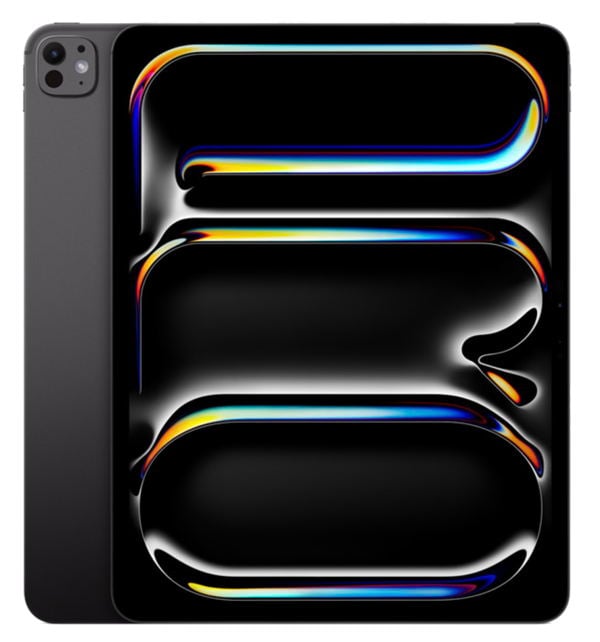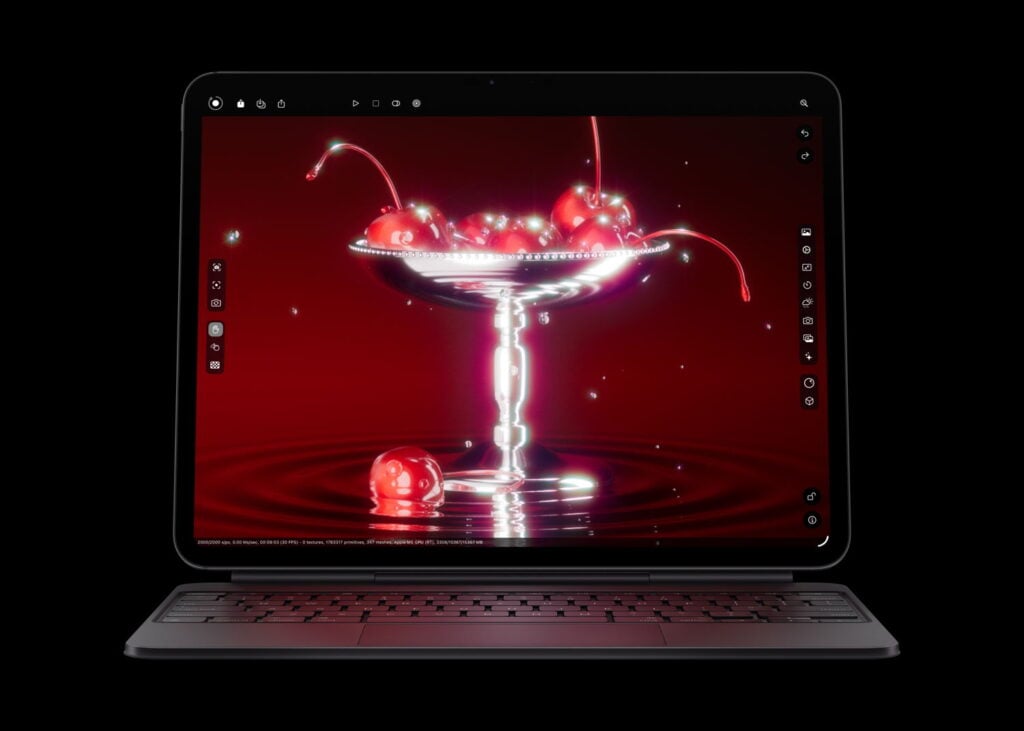
If you are a lawyer or other professional who wants a nice iPad that will be fantastic for getting your work done and will also be great for surfing the Internet, looking at pictures, and otherwise using that device when you are off the clock, the iPad Air is a fantastic option. It now includes many features that were previously only available with an iPad Pro, and it was just updated seven months ago to use the M3 processor. And at a starting price of only $599, you get a lot of bang for the buck. But if you consider yourself a power user, you can spend more to get the iPad Pro, which has a lot more features. On May 7, 2024, Apple introduced the iPad Pro M4. I’ve been using the iPad Pro M4 virtually every day since it came out, and I love that device for the reasons I noted in my review. Yesterday, Apple replaced the iPad Pro M4 with the iPad Pro M5, and the name tells you almost everything that you need to know about this device: Apple replaced the M4 processor with the faster M5 processor. If you are in the market for a high-end iPad, the iPad Pro M5 is now the iPad to get.
In today’s post, I’m going to discuss what has changed from the iPad Pro M4, what makes the iPad Pro such a good device to use, and who should instead save $400 and get an iPad Air (M3).
M5 > M4
A big reason that the M5 version of the iPad Pro is better than the M4 version is that it uses an M5 instead of an M4 processor. The M5 is a cousin of the A19 Pro chip that is used in the new iPhone 17 Pro, so it is a little bit faster than the M4 in most tasks. Apple says that the performance increase is most noticeable when your iPad uses the Neural Engine to do AI work: about 3.5x faster than the M4. It also features faster graphics performance (over 4x the peak GPU performance of the M4) and a faster CPU.
The iPad Pro M5 also has more memory if you get the least expensive models, the ones with 256GB or 512GB of storage: 12GB instead of the 8GB in the iPad Pro M4. That is also similar to what Apple did with the iPhone 17 Pro, where the memory is 12GB in the 2025 model versus 8GB in the 2024 model (the iPhone 16 Pro). I suspect that the additional memory is largely there because it makes on-device AI work so much better, but extra memory is more useful for any task, even if you are just keeping lots of browser tabs open in Safari. Note that if you opt for the 1TB or the 2TB models of the iPad Pro M5, you get 16GB of RAM, which fantastic, but it is the same as what you got with the 1TB and 2TB models of the iPad Pro M4.
Speaking of memory, the memory bandwidth is a little better: 153GB/second for the iPad Pro M5 versus 120GB/second for the iPad Pro M4. Thus, not only can you keep more tasks in memory thanks to the additional RAM, but things move in and out of memory 30% faster. Again, this helps with AI and multitasking.
Apple is also bringing its new C1X modem to the versions of the iPad Pro M5 models that feature a built-in modem. The only iPhone to feature an Apple-built modem is the iPhone Air; the other iPhone models use a Qualcomm modem, which is more powerful but more power-hungry. Apple says that the C1X modem uses 30% less energy than the modem used in the iPad Pro M4. It also features the same Apple-designed N1 wireless networking chip that Apple used in the iPhone Air. Apple says that the N1 chip offers networking improvements, but since the iPhone 17 Pro doesn’t use an N1, it seems that even Apple doesn’t believe that the N1 is always the best networking chip to use in a device. The N1 chip does mean that the iPad Pro M5 can work with the new Wi-Fi 7 standard; the iPad Pro M4 worked with Wi-Fi 6E.
All in all, these improvements are incremental, but they are still improvements. Having a faster processor, and having more and faster memory, means that the iPad Pro is even more “Pro” than ever before. I don’t think that anyone needs to upgrade from an iPad Pro M4, but if you are using an older version of the iPad Pro or a non-Pro iPad, you will have lots to appreciate.
M5 = M4
Aside from those improvements, this looks to be a great iPad for the same reasons that I love the iPad Pro M4 so much. First, it is the thinnest iPad and very light, which is very nice when I’m holding an iPad in my hands for a long time to read and annotate a document.
The screen is also amazing. The iPad Pro M4 and iPad Pro M5 both feature a Tandem OLED display, and it is the best display on any device—better than any computer, iPhone, TV, you name it, that I have ever seen. The display is crisp, the colors are vivid, the screen is bright, and it is a joy to use. Sure, when I am reading black-and-white briefs, having a better display is no big deal. But when I am looking at pictures or movies, it is wonderful.
I also appreciate that the iPad Pro now places the self-facing camera on the long edge, which works so much better for video calls because I virtually always keep my iPad in landscape orientation.
Finally, just like the iPad Pro M4, the iPad Pro M5 supports the Apple Pencil Pro, which is a nice improvement over the Apple Pencil. As I described in more detail in this post, it supports the squeeze gesture, it includes a gyroscope, it provides haptic feedback, and it includes Find My support if you lose the Pencil. This new iPad Pro also works with the latest and best version of Apple’s Magic Keyboard for iPad.

Etc.
A few other minor notes about the iPad Pro M5. If you prefer a nano-texture glass display to reduce glare, you have the option to spend $200 more for that display if you opt for the more expensive 1TB or 2TB models. With those two higher-end models, you also get a 10-core CPU instead of a 9-core CPU, which gives you a slight additional speed bump for certain tasks.
You can also charge the iPad Pro M5 a little faster if you use Apple’s new 40W Dynamic Power Adapter with 60W Max or another compatible adapter. That’s something that Apple also added to this year’s iPhone 17 models. For the iPad Pro M5, it means that you can charge up to 50% in 35 minutes.
If you use an iPad with an external display, the iPad Pro M5 can support a display with a 120Hz refresh rate. The current version of the Apple Studio Display supports 60Hz. This feature on the new iPad Pro makes me wonder if a new and improved Apple Studio Display is going to be released in the coming months.
M5 vs. Air
If you are using an older iPad and you are ready to upgrade, should you get this new iPad Pro M5 or should you get the iPad Air (M3) that was released earlier this year?
Although the iPad Air (M3) starts at $599, that model has 128GB of storage space. If you are storing lots of documents and videos, that may not be enough. The $699 version of the iPad Air (M3) has 256GB of storage space, which is the better size for many professional users. If you spend the extra $300 on the iPad Pro M5, the main things that you get are (1) a much nicer and brighter OLED screen, (2) more memory, and memory that is faster, (3) Face ID instead of Touch ID, (4) four built-in speakers instead of two, and (5) the speed of an M5 processor instead of an M3. I consider that to be a much better iPad, well worth the extra $300 for anyone who uses an iPad extensively. However, if those additional features don’t sound particularly important to you, or if you are a more casual iPad user, consider saving $300. The iPad Air is still a fantastic iPad.
Conclusion
In addition to the new iPad Pro, Apple also announced a new MacBook Pro and a new Vision Pro yesterday, both of which also include the new M5 processor. I love that Apple now considers the iPad Pro to be such an important device for professional users that it has decided to include the latest and improved processor family in the iPad Pro from Day 1. I cannot say enough good things about the iPad Pro M4. It has been a key part of my life for over a year now. The iPad Pro M5 has everything that I love about the iPad Pro M4, plus more. This device looks fantastic.
